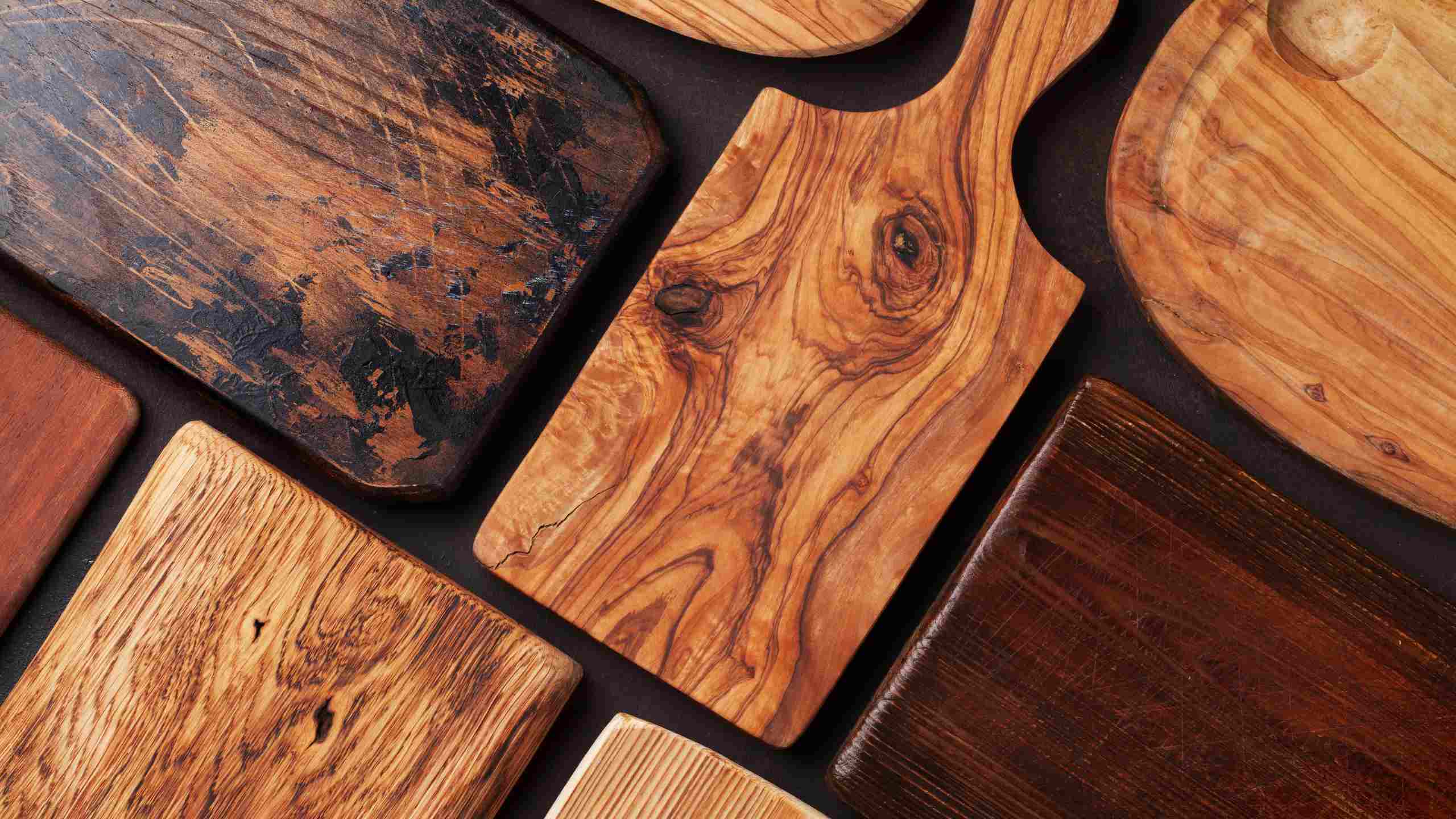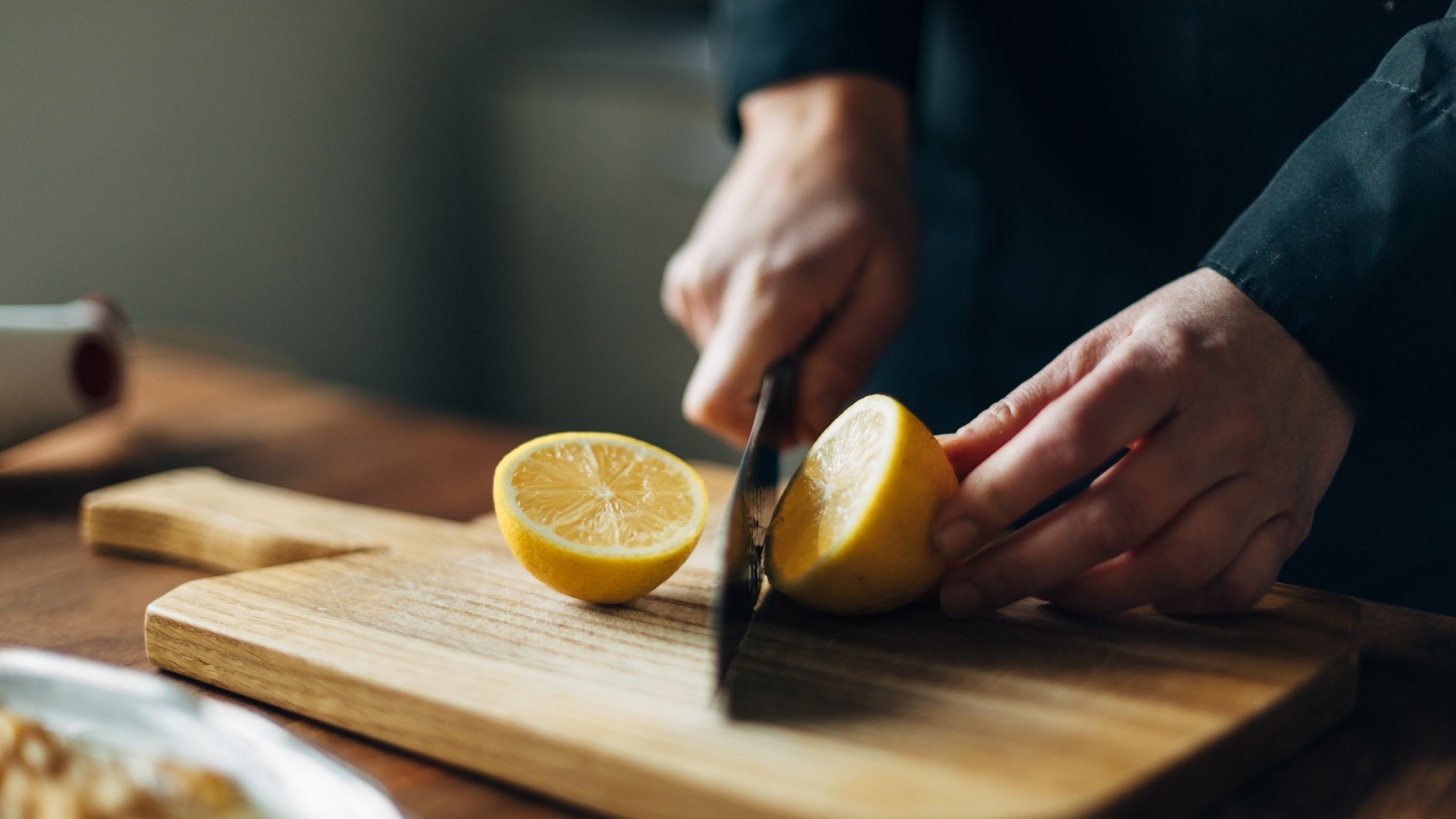Let’s cut to the chase:
Have you had your cutting board for several months? Do you use it for all types of food? Do you notice a strange smell or too many cut marks? If the answer to all these questions is “yes”, the time has come to replace your cutting board.
When preparing food of any kind, whether that is a full meal or just a snack, cutting boards are the one utensil you likely call upon. But while choosing the perfect cutting board may seem straightforward, this often underrated utensil can affect the flavour, hygiene and even safety of food.
But hey, spoiler alert: the perfect cutting board doesn’t exist. It all depends on how it is cared for, washed, disinfected, and stored. Come learn some tips and best practices for cutting board care.
How to choose a cutting board
The main factor to consider when choosing a cutting board is also the one that generates the most confusion: its material. There are cutting boards made of wood, plastic, glass, marble, acrylic, rubber and even slate. Not all of them are suitable for food preparation, however. Glass or marble ones, for example, are easy to clean, but can break and cause damage. You can use these cutting boards to serve cheeses, charcuterie, fruit, or bread – but not for cutting.
The most recommended materials for actually chopping food are solid wood, bamboo, hard plastic (acrylic) or rubber. Each of which has different characteristics and properties.
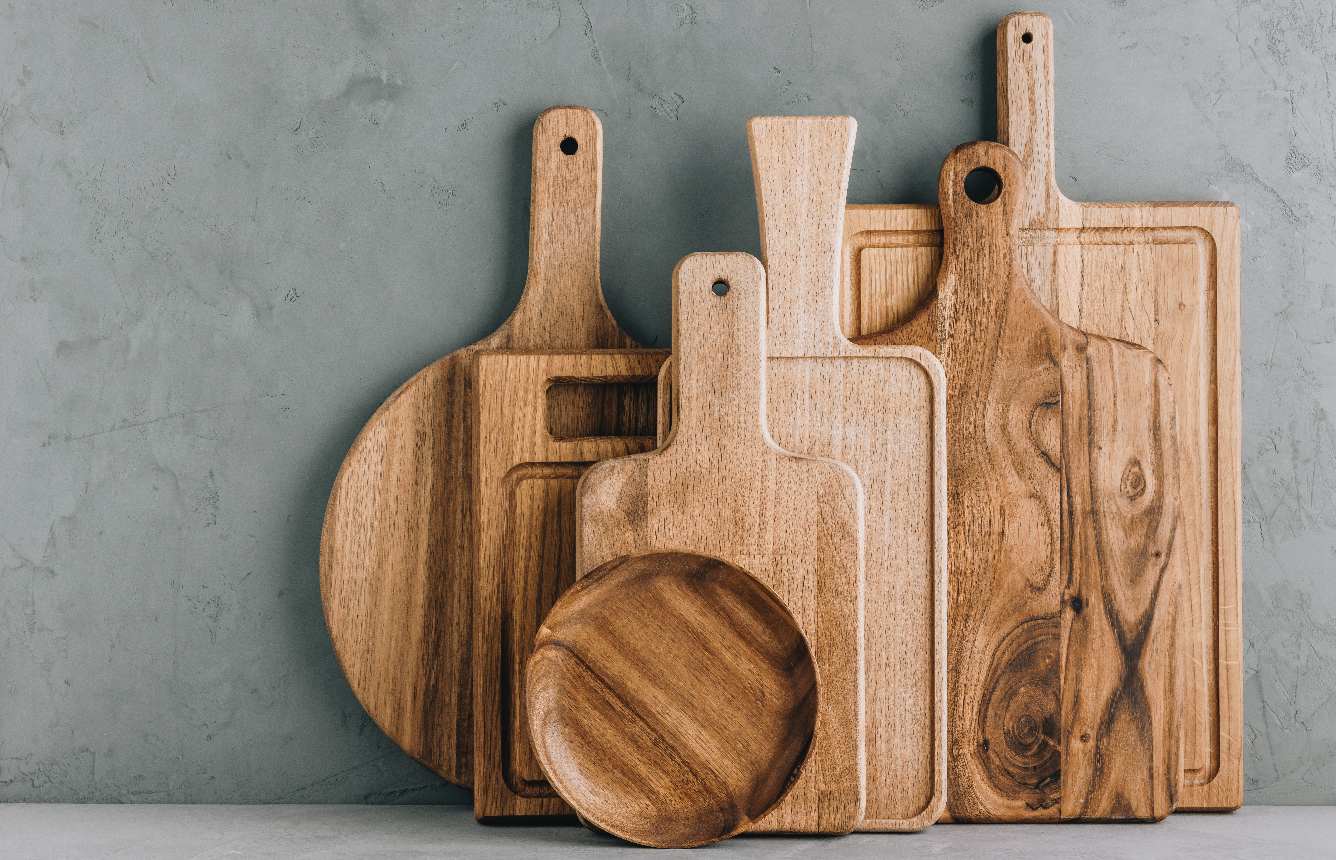
Wooden cutting board
A solid wood cutting board is sturdy, durable and will not deteriorate with water – even hot water, although it’s recommended that you don’t wash it in the dishwasher. Avoid pressed wood planks and make sure it’s made from a single piece, as the joints in the wood and the creases from its use can become nesting grounds for bacteria. Also, look for wooden cutting boards with an antibacterial coating.
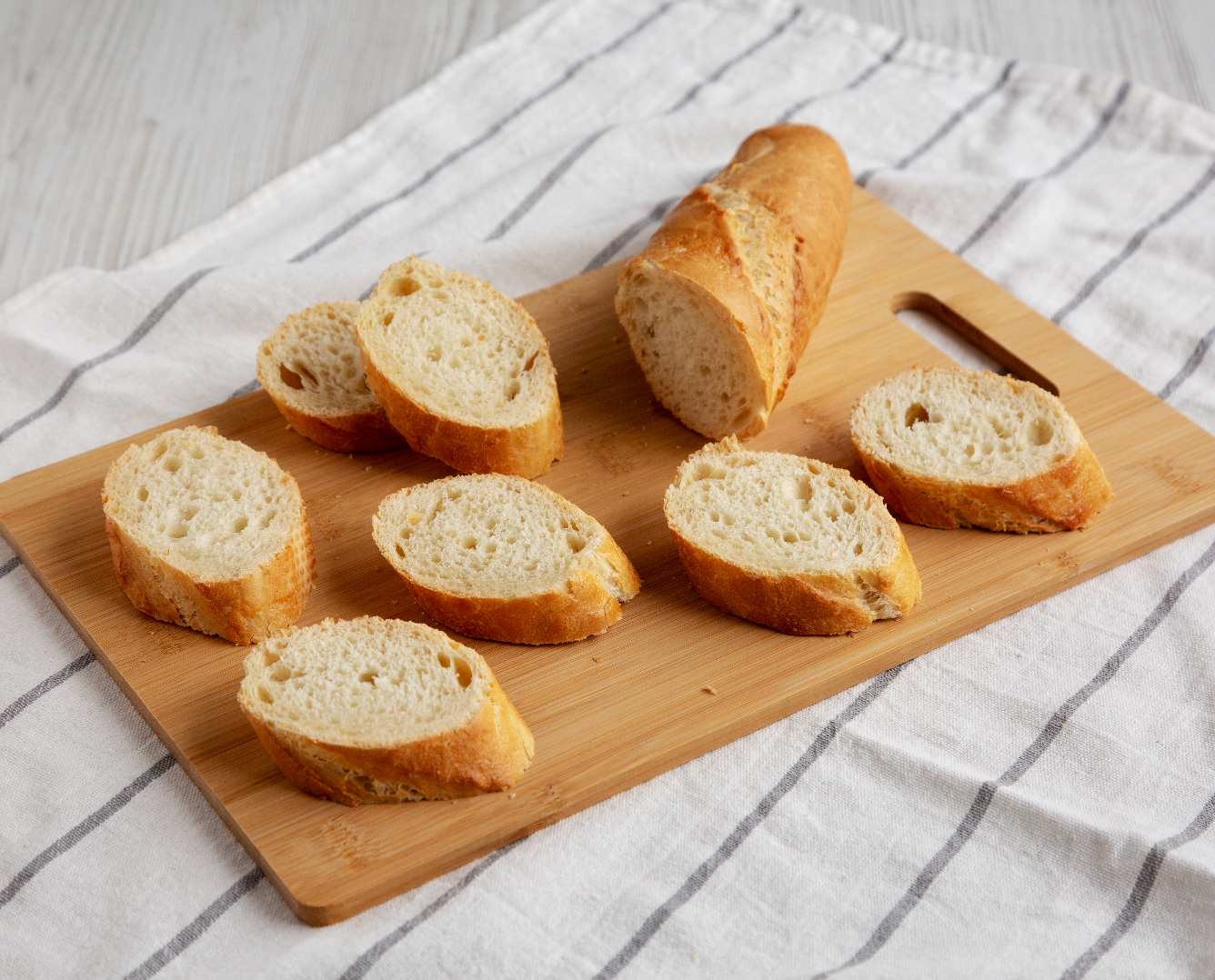
Bamboo cutting board
Bamboo cutting boards are resistant, compact and have hypoallergenic properties. Keep in mind that bamboo cutting boards are usually harder than wooden boards, so they can damage knives more easily. Bamboo is more sustainable than plastic, as it grows quickly, does not require fertilisers and regenerates from its own roots – which is why it does not need to be replanted. Both bamboo and wooden cutting boards are suitable for cutting bread or to slice a homemade pizza, for example.
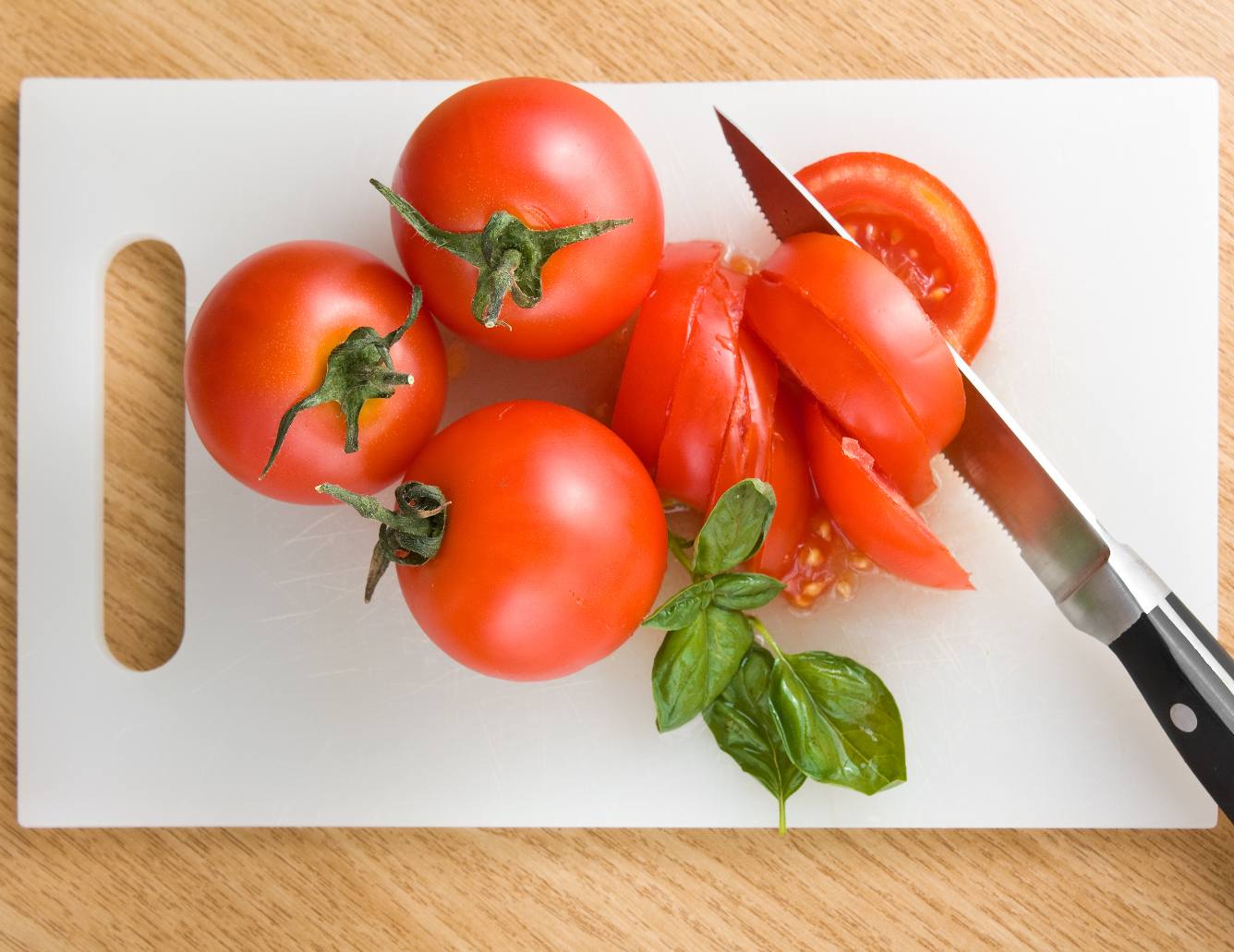
Plastic cutting board
Plastic boards are common and affordable, most notably those made from polyethylene or polypropylene. Acrylic cutting boards are a great choice because they are easy to keep sterile and clean. They are also waterproof, dishwasher safe, and sturdy. Nevertheless, if a plastic cutting board is used too often, it can start to decay and transfer microplastics to your food. Plastic cutting boards are also non-recyclable.
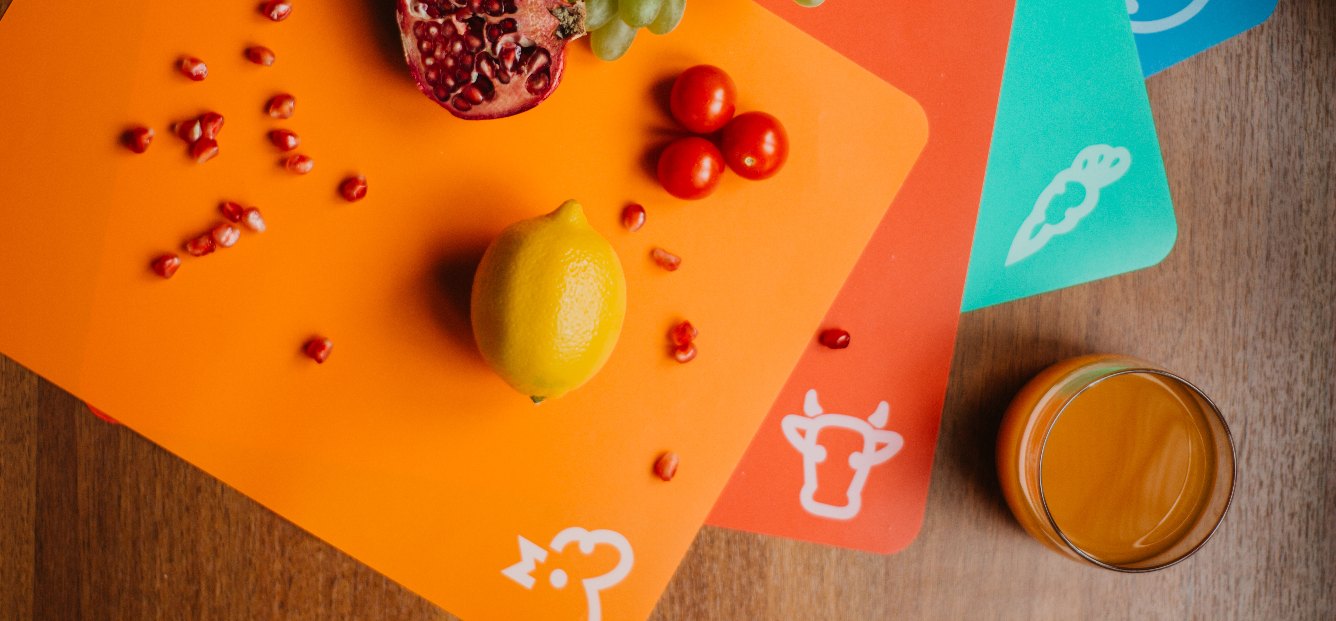
Rubber cutting board
Rubber cutting boards are flexible and thin, resist heat, are waterproof and easy to clean and sterilise. Just like acrylic cutting boards, these boards are widely used in restaurants and professional kitchens.
But the choice of material is only the first step in ensuring a cutting board is in good condition. The way you wash, care for, and store it is equally important for its longevity and safety.
Caring for your cutting board
Whatever the material, there are some precautions to take when using a cutting board to ensure that there is no cross-contamination or proliferation of harmful bacteria.
- Avoid using boards with cuts, holes, cracks, or other damage – these can become contaminated with bacteria;
- Do not use the same cutting board to cut bread, raw meats, raw fish and seafood and vegetables – the best option is to have a different cutting board for each type of food;
- If you use only one board for food from different groups, always wash and disinfect it before using it for another food;
- Disinfect cutting boards before storing them in the cupboard, preferably with soap and water;
- If dried out food bits are stuck to the board, use a semi-abrasive material, such as a dish scourer or a brush;
- If possible, wash cutting boards in the dishwasher after hand washing, for deeper disinfection;
- Use a clean, dry cloth, fresh from the drawer, for your cutting boards – forget about the kitchen cloth you just wiped your countertop or hands with;
- If you let the cutting boards air dry, place them in an upright position instead of laying them flat. And, to allow air circulation, do not lean or stack them on each other until they are completely dry;
- Replace your cutting boards regularly.
With these tips, chopping vegetables for soup or slicing meat for dinner will never be the same – choose your cutting board wisely and use it with maximum hygiene and food safety.
